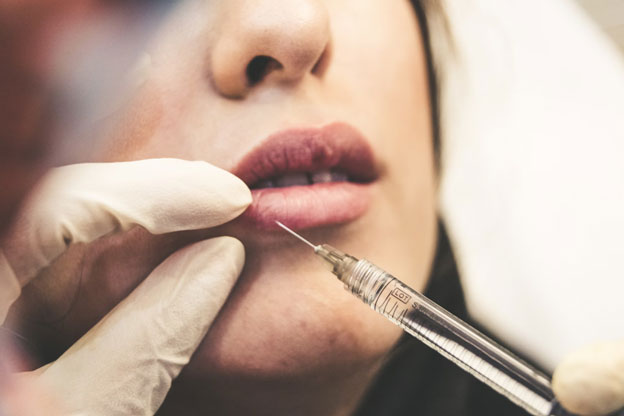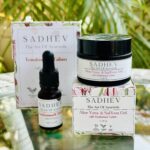Plastic surgery involves various techniques, including skin grafting, implants, and tissue manipulation. Surgeons use these to restore function or for cosmetic purposes. People seek cosmetic procedures for various reasons, ranging from confidence enhancement to physical well-being. It is essential to be aware of the options and risks in order to make the right decisions.

Plastic surgery is divided into cosmetic and reconstructive surgery on a general basis. Cosmetic surgeries are facelifts, breast augmentations, liposuction, and rhinoplasty. These enhance appearance and self-image. Cosmetic surgery is opted for by many in order to achieve their desired look and confidence.
Reconstructive surgery addresses clinical problems such as closing a cleft palate, burns, and breast reconstruction after mastectomy. These procedures restore normal function and appearance, and the patient’s confidence is regained. Both cosmetic and reconstructive surgeries must be done by skilled surgeons to be effective and safe.
Popular Cosmetic Surgeries
Several cosmetic surgeries have gained popularity due to their dramatic results. Breast augmentation enhances breast size by using implants or fat transfer. Rhinoplasty reshapes the nose for aesthetic or functional purposes. Liposuction removes excess fat, contouring the body for a slimmer appearance.
Facelifts and Botox injections reduce wrinkles and restore a youthful look. Eyelid procedures eliminates excess skin, causing the eyes to appear brighter and the face more balanced. All procedures vary in complexity and recuperation time and should be carefully considered prior to the procedure.
The plastic surgery process starts with a consultation. A board-certified doctor like Columbus plastic surgeon Dr. Haruko Okada examines the patient’s goals, medical history, and physical condition. The surgeon explains options, risks, and results. A proper consultation helps the patient make an informed choice, so learn more below:
After a procedure has been selected, preoperative preparations start. Patients may require medical tests, lifestyle changes, or temporary prohibitions on certain medications. On the procedure day, anesthesia is induced and the procedure is done. Postoperative care is important for a smooth recovery and best results.
Recovery and Recovery
Recovery period is calibrated according to procedure and individual recuperative capacity. Swelling, bruising, and soreness may develop during the initial few days (source: https://forums.digitalspy.com/discussion/985808/would-you-get-plastic-surgery). Post-operative directions such as the wearing of compression hosiery or avoidance of excessive exercise facilitate optimal recuperation.
Most cosmetic treatments take a few weeks to see an improvement, though full recovery takes several months. Follow-up appointments ensure progress and any problems are addressed. Patience and adherence to medical advice provide the best long-term results.
With any procedure, there are risks involved with cosmetic work. These risks include complications of infection, scarring, and reaction to anesthesia. Having a qualified and experienced surgeon minimizes these risks. Patients will want to thoroughly research their surgeon’s qualifications and past results before proceeding.
Unrealistic expectations may lead to disappointment. It is essential to make it extremely clear what procedure is likely and unlikely to accomplish. Clear communication with the surgeon helps in aligning expectations with possible outcomes. Balance of benefits and risks ensures an informed decision.
Who is a Good Candidate?
Good candidates for cosmetic surgeries are normally in good health with sound expectations. They are not smokers and are of stable weight. They do not have any pre-existing medical conditions. Psychological preparation is also important since surgery not only impacts physical health, but emotional health also.
Individuals who are going in for cosmetic surgery need to be internally driven, not externally driven. A consultation with a seasoned surgeon determines if a procedure is the right answer. Honest discussion of expectations and medical history goes towards a successful outcome.
The majority of individuals attempt non-surgical alternatives prior to plastic surgery. Botox and fillers temporarily decrease wrinkles and facial renewal. Laser resurfacing refines skin texture, reducing scars and pigmentation. CoolSculpting and other non-surgical fat reduction treatments provide body contouring without surgery.
While non-surgical treatments yield clear-cut results, they can never give the type of change one receives from undergoing surgery. Several maintenance treatments become inevitable. Awareness of distinctions between surgical and non-surgical treatments makes people make wise decisions on the best choice for them.
Long-Term Maintenance and Outcomes
The duration of cosmetic work outcomes varies with several factors, such as lifestyle and aging. Stable weight, healthy diet, and proper skincare extend outcomes. Exercise helps maintain overall health and body contour.
Conclusion
Plastic surgery is a personal choice one needs to make, so careful thought is required. According to this link, cosmetic or reconstructive purposes require making an informed decision by being aware of the procedures, risks, and results. Consulting a board-certified plastic surgeon provides valuable information in making an informed decision.
Along with physical transformation, plastic surgery has a profound psychological impact. A majority of patients are more self-assured and have greater self-esteem after achieving the desired look. Feeling comfortable in one’s skin can lead to greater social ease, enhanced professional opportunities, and a positive sense of self.
To some, the results of plastic surgery can assist in strengthening a good self-concept, allowing them to overcome inadequacies that could otherwise have affected their day-to-day living. Patients generally report feeling more confident about how they look, something that is able to affect their mental wellbeing in a positive way. Research has shown that patients who undergo surgery with realistic expectations are happier and more satisfied.
On the other hand, individuals who seek procedures to achieve impossible beauty standards or societal pressures may not handle disappointment well. In certain cases, body dysmorphic disorder (BDD) can lead to compulsive dissatisfaction, and no surgical restoration will ever satisfy. It is for this reason that psychological evaluation and extensive consultation with surgeons must be done before undergoing any procedure.
Plastic surgery is a way of helping individuals better fit their concept of who they ought to be. When applied in the proper spirit and with an open understanding of realistic expectations, it has the potential to enhance not just physical appearance but also emotional adjustment and quality of life.




Leave a Reply